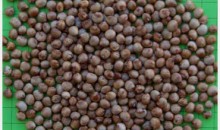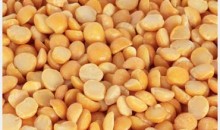BRISBANE: +61 7 350 36778 MELBOURNE : +61 3 994 84091 SYDNEY: +61 2 802 28423

Field pea are one of the oldest domesticated crops, with archaeological evidence showing they were brought under cultivation in the Stone Age, more than 20,000 years ago. They are now grown in many countries for both human consumption and stockfeed.
Field pea varieties range in growth habit from trailing to erect at maturity. The trailing growth type can be difficult to harvest but the semi-leafless/semi-dwarf forms of Field pea – where leaves have been modified into tendrils – can have a better standing ability, aiding harvestability. Plant height at flowering is affected by temperature and light as well as variety.
Current production in Australia is approximately 400,000 tonnes. The majority of the Australian product is exported, mainly for human consumption in Asia and the Middle East and to stockfeed markets in Asia and Europe. However, additional demand for the crop has risen due to the use of Field pea as an alternative protein source in stockfeed, both domestically and overseas.
The major Field pea varieties grown in Australia can be divided into four groups:
Field Peas are a good source of dietary proteins and energy. The starch content, which can vary from 30 to 50 per cent, is high, and comparable to Angustifolius Lupins. The fat content of Field pea is very low (approx. 1%) as are the levels of fibre and lignin, while the content of soluble carbohydrate (mostly starch) is high. The protein content of Field pea is lower than Angustifolius Lupins at 23%.
The metabolised energy content of Field pea for ruminant and non-ruminant animals is high due to the high content of soluble carbohydrates. In poultry diets, Field pea has a significantly higher metabolisable energy value than soybean meal. Field pea are low in calcium, sodium and possibly copper, depending on soil conditions.



